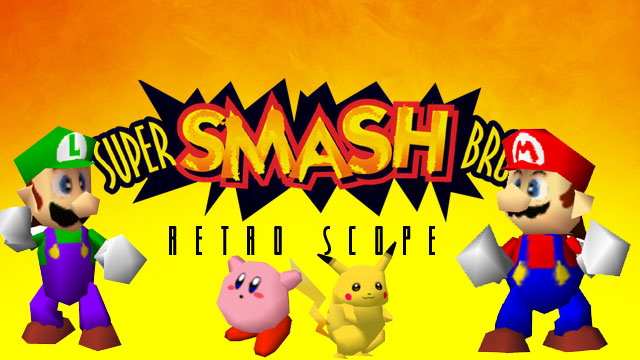
I was less than ten-years-old when I first got my hands on the original Super Smash Bros. and it blew me away. Before the game was released, kids on our playground at school would talk smack about other Nintendo characters by saying things like, “Link could totally beat Mario in a fight because of the equipment at his disposal.” We’d make crazy theories about who could beat who and try to gather evidence to justify our stances. But once Super Smash Bros. was released, we didn’t have to do that anymore. We could play the game instead and prove that characters like Mario do stand a chance against others like Link!
I’ve never been good at traditional fighting games like Street Fighter II, but the prospect of having my favorite Nintendo characters duke it out in the same game was a dream come true, so I gave it a shot. I was ready to be intimidated by quarter circle turns and hard to learn combos, yet I found myself pleasantly surprised by how easy the game was to learn. There are five ground and four aerial attacks that represent a character’s standard moves, which can easily be done by pressing the analog stick up, down, or sideways and pressing the A button. There are also three special moves that are activated with the same analog stick directions and the B button, allowing a fighter to showcase unique character-specific moves like Link’s bombs and boomerang. Then, once enough damage is done to a player, you can perform a smash attack by pressing one of the three analog stick directions and the A button at the same time to knock them out of the arena.

Without counting grabs, that’s only a list of 15 moves for a single fighter! Not only that, the fact that normal, aerial, special, and smash attacks all use the same three kinds of directional input makes them incredibly easy to remember. There was never a time where I had to find a list of the different kinds of moves that a fighter could do in the heat of a battle, as the control scheme made everything intuitive and helped attacks feel natural. Sure, the game is the furthest thing from Street Fighter II because of the controls, the lack of health bars, and KOs that shoot fighters outside of the arena, but that’s what made me fall in love with it in the first place. Traditional fighters always appeared so complex to me, so having something completely unique and different in terms of gameplay was imperative for gaining my attention.
By nature, Street Fighter II also plays like a more competitive game. Every match is a one-on-one fight to the death that demands high skill from both players. But with Super Smash Bros., you can have four players jump into a game at once to remove the tension of a one-on-one match and use items to add an element of luck. Once you also consider the fact that attacks aren’t difficult to learn, it’s easy to see how noncompetitive gamers are able to play without any issues, exemplifying how Super Smash Bros. can act as the perfect party game.

Yet, it would be a disservice to say that Super Smash Bros. is only a party game. For me, that’s just how it started. I played for fun, but I eventually got good enough to develop an ego after beating the same group of friends multiple times. I’d ignorantly think, “I’m totally one of the best Smash players,” yet when I played one of my brother’s friends for the first time, I got destroyed. My predictable Kirby was no match for his speedy Fox and I was left completely dumbfounded, causing me to take my fighting style back to square one. I practiced every week, watched his fighting techniques to learn his strategies, and learned to anticipate his every move with a counter of my own. Then, after an intense rematch on Sector Z, I was able to take him down in a three stock match without losing a life. At that moment, I realized that a so-called party game could also become a heavily competitive game as well.
Now, I’m 22-years-old. I’ve been playing games in the Super Smash Bros. series for about 15 years, continuing to hone my skills and fighting strategies with each new opponent I play against. While I no longer think that I’m one of the best players in the world like I did when I was younger, the techniques I’ve developed over the years have made me a much better player and gave me the ability to win my college’s Super Smash Bros. Melee tournament two years ago. I’ve definitely become a more competitive player in Smash over time, but I’ll never forget that my roots in the series came from playing it as a party game on the N64. Even now, with the newest Smash roster reaching over 50 characters, I’ll still dust off the old N64 every now and then just to appreciate what the original 12 character roster did for me as a gamer.




 ShareThis
ShareThis







The funny thing is, this 16 year old game STILL has an active competitive scene. There was a new tier list that was published just last week.
Of course! Melee is still way more popular, but I find it fascinating that people still have tournaments for the N64 version. Pros like Isai are always a ton of fun to watch.
I must be in the minority with the smash bros. games. I tried the first two, and never could get into them. The hype for those who like these games is justified I guess. I have plenty of friends who are incredulous I didn’t pre-order the $100 bundle and the 3DS version. Just not my thing, but I have watched people play it and it’s fun to watch for a while.